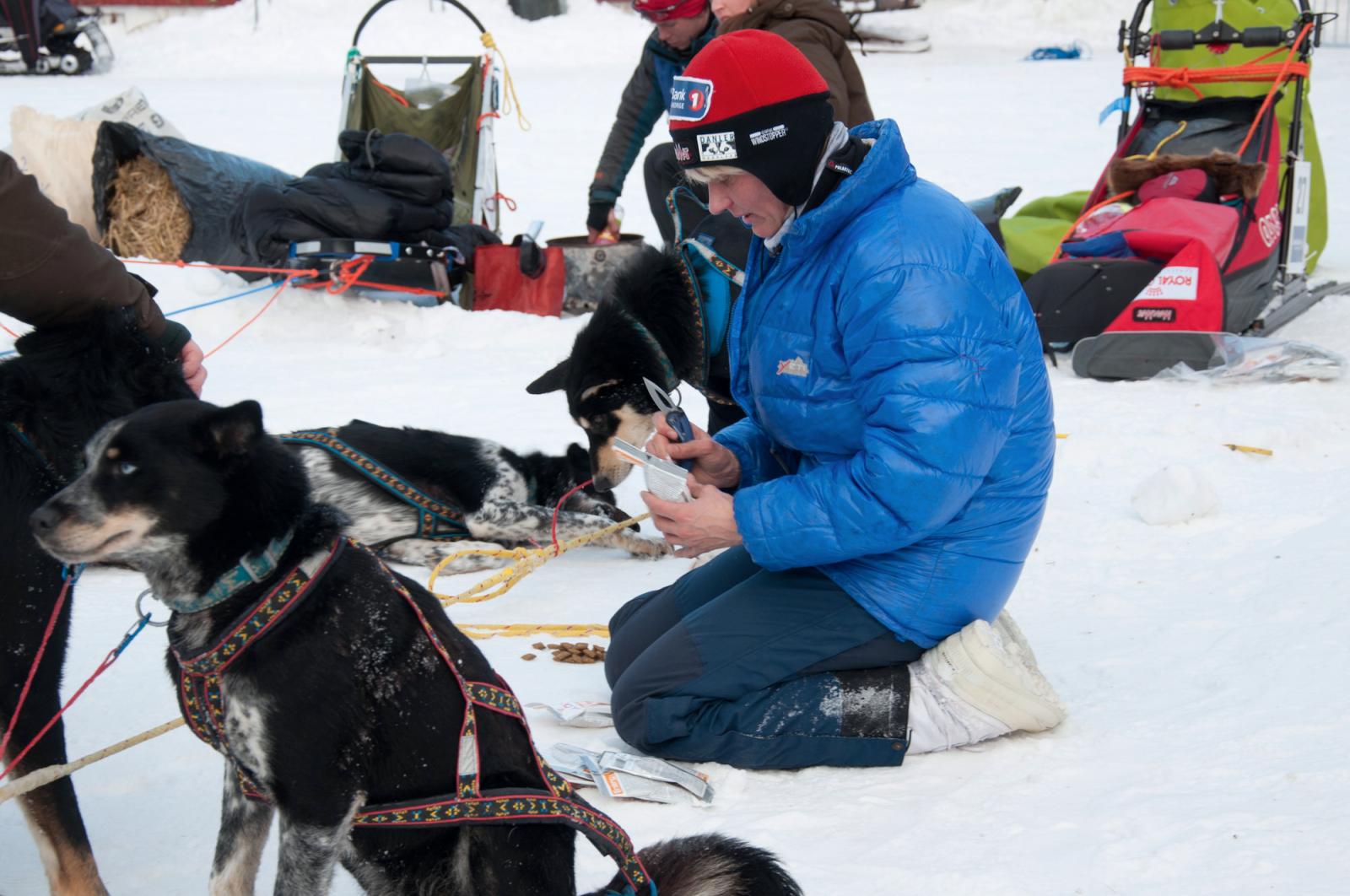
Written by: Ole Martin Jøraholmen/Transl. SM Arctander
Photo: Geir Stian Altmann Larsen
Date: 11.03.2012 18:01
Whether you do 500 or 1000 km running time is important, but in the fight for the best total it is important to be effective at the check point. At Karasjok the Scandinavian trio, Ole Sigleif Johansen; Katy Meier and Ole Wigren, are in the lead.
Johansen arrived at 3.32pm and Wingren at 4.52pm. The former used 55 minutes to tend to his dogs; Katy Meier used 48 minutes and Ole Wigren used 39 minutes to do the same job. Tending to the dogs includes loosening the harnesses, taking off booties, carrying water, preparing straw beds and blankets, check the dogs together with the vet, start the water boiler among other.
(Article continues below the picture)

Katy Meier has taken off the booties and preparing to rest.
Even though Wingren arrived last in to Karasjok, he only has to rest 3 hours and 37 minutes before he can leave. Meier has 4 hour and 19 minutes to rest, while Ole Sigleif Johansen has to wait for 5 hours and 21 minutes. More important than arriving and leaving is how much the dogs get to rest, and that is way it is so important to be effective at the check point. Time rested indicates how well the dogs are restored.
In other words: The faster you are, the more time the dogs get to rest. Between Wingren, Meier and Johansen it is a close race, but the fastest at check point Karasjok is:
#1 Ole Wigren (60), Finland
#2 Katy Meier (41), Sweden
#3 Ole Sigleif Johansen (30), Norway
First one into Karasjok, Ole Sigleif Johansen, carries water to his dogs.
Photo: Geir Stian Altmann Larsen and Markus Leistad